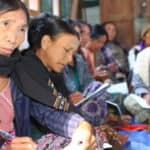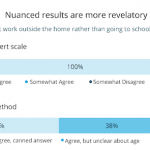Better Neighborhood, Better Life: What Research Shows About Investments in Equitable Development
Frank Hagan ran Milam Glass in metropolitan Phoenix for 38 years. He grew it from a three-person operation to a successful, 30-employee business providing premium-quality glass for schools, resorts and a range of commercial projects.
As he was contemplating retirement, Hagan knew he wanted to pass the business along to Alex Nevarez, a longtime trusted employee who arrived in the United States at age 15 from Mexico. But there was a problem: Nevarez had filed for bankruptcy several years earlier because of insurmountable medical bills. As a result, he couldn’t get a loan to do the deal.
Fortunately, a community lender stepped in to help. With funding through an investment from JPMorgan Chase, Préstamos CDFI provided financing that allowed Nevarez to buy the business in 2014 and build a new headquarters that opened this year. Under Nevarez’s leadership, the company has continued to grow and contribute to the community, with a staff of 40 employees and counting.
A New Path to Opportunity
Traditionally, the work of community development and poverty alleviation has happened in silos. Nonprofits and funders tend to invest separately in housing, transportation, workforce and small business development. While these investments can and often do create good outcomes for people and places, it’s too often a scattershot approach that overlooks the research about what it really takes to create healthy, opportunity-rich communities.
At JPMorgan Chase, we are working with Préstamos and other community lenders across the country to pilot a new approach. It’s an approach that recognizes the complexity of community challenges and the need for comprehensive solutions tied to a larger strategic vision for revitalization. Launched in 2014, Partnerships for Raising Opportunity in Neighborhoods (PRO Neighborhoods) is a $125 million, five-year commitment to providing communities with the capital and tools they need to fuel inclusive economic growth.
As part of this work, JPMorgan Chase sponsors an annual competition aimed at sparking collaboration among community development financial institutions (CDFIs), lenders that provide affordable financing to promote economic opportunity for underserved communities. The goal is to support and incentivize these organizations to pool their resources and expand lending for comprehensive, holistic strategies to close the opportunity gap in neighborhoods across the country. To date, JPMorgan Chase has hosted four competitions supporting 21 CDFI collaboratives; we issued the RFP for our fifth competition in early March, with proposals due April 20.
Promising Results
Préstamos, headquartered in Phoenix, was part of a collaborative that won the first competition in 2013. The collaborative was organized by the National Association for Latino Community Asset Builders (NALCAB). In addition to Préstamos, it included two other CDFIs: Affordable Homes of South Texas, Inc., and Colorado Housing Enterprises.
Over a three-year period, these CDFIs used a $6 million investment from JPMorgan Chase to leverage more than $102 million in additional capital — an impressive 15:1 rate of leverage. These funds supported holistic neighborhood revitalization strategies that included small business lending, affordable housing development and mortgage lending. In an innovative approach to collaboration, the partners used $2.6 million of the dollars to create a pooled social investment fund (the NALCAB Catalyst Fund) to create and preserve affordable housing in appreciating markets across the country.
By combining their resources, they were able to improve their efficiency and, most importantly, their impact. In three years, the NALCAB consortium issued 81 mortgages for low- and middle-income homebuyers, created or preserved 269 units of affordable housing, and made investments in 16 businesses resulting in 505 jobs. This collaboration allowed the organizations to “bring in good partners, grow [their] reach and drive real economic changes in low- and moderate-income communities,” said Irene Chavez, director of resource development and strategic communications with NALCAB.
A Harvard study of the PRO Neighborhoods program affirms that the NALCAB consortium is not alone in achieving these kinds of results. In a 2017 impact assessment, Harvard found that JPMorgan Chase investments enabled the winners of the first two competitions to issue a wide range of loans totaling more than $320 million. These loans, in turn, helped create or preserve nearly 2,700 units of affordable housing, supported more than 6,800 jobs and leveraged an additional $549 million in outside capital (an 11-to-1 ratio). Harvard also released a recent report showcasing the impact that this type collaboration has on improving CDFI programs, revitalizing communities and enhancing the local community investment ecosystem.
Place matters
PRO Neighborhoods is inspired by JPMorgan Chase’s $150 million investment in the economic recovery of Detroit, which has included extensive support for neighborhood stabilization.
We are focused on neighborhoods because the research is clear: Where you are born and grow up is a major factor (if not the major factor) in determining your economic trajectory. Data from the Equality of Opportunity Project at Harvard affirm that moving to a “better neighborhood” increases a child’s professional outcomes and earnings while moving to a worse neighborhood is likely to make a child worse off over time. Upsetting new research from Harvard and Stanford reinforces the role that environment, in addition to structural issues, plays on exacerbating inequality among races.
For JPMorgan Chase and many of our partners, this research affirms an urgent need to invest in disadvantaged neighborhoods so they can provide children and all residents with more opportunities to succeed. That’s what PRO Neighborhoods is about: supporting communities to develop integrated strategies that keep and grow small businesses, expand health and social services, and improve access to affordable housing to ensure that where you live doesn’t determine your life outcomes.
Our work affirms that community-based leaders understand the neighborhood’s needs best and stand ready to do more to tackle these issues. What they need is flexible capital to work together to alleviate poverty by tackling complex, community-wide problems and developing cross-cutting solutions.
The Power of Planning
Our work with these partners also has shown the value of developing a larger equitable development plan to guide neighborhood transformation. This means helping communities collect and use forward-looking data, maximizing resident participation in planning, building the capacity of local organizations, considering the needs of the most vulnerable populations, and actively working against the displacement of low-income residents and small businesses.
Based in part on its PRO Neighborhoods partnership, NALCAB has developed a toolkit that can help communities develop these types of equitable development plans to ensure that all residents can thrive in place. “We think there is a real opportunity for our members and others to think about where their markets are moving and get out ahead of the trends,” said NALCAB Senior Program Manager Paul DeManche. “What this is about is equipping people in the community to plan so everyone can share in a neighborhood’s growth.”
All too often, development happens to a community and not with a community. Working with our CDFI partners across the country, JPMorgan Chase is trying to put people and communities in control—so they can create a better future for everybody.
Colleen Briggs is head of Community Innovation with JPMorgan Chase.
Photo by London Scout via Unsplash
- Categories
- Finance, Impact Assessment



